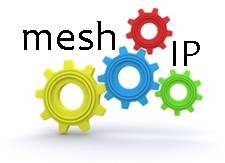 Cloud computing is no longer just the realm of experimenters. Research suggests about 86 per cent of Australian companies now use a cloud service of some type, while the rest are more than likely to deploy a service in the coming years.
Cloud computing is no longer just the realm of experimenters. Research suggests about 86 per cent of Australian companies now use a cloud service of some type, while the rest are more than likely to deploy a service in the coming years.
Companies are finding cloud services provide the agility, flexibility and scalability they need to reduce the cost of doing business, or even completely changing the way they do it.
Although cloud services are now ‘business as usual’, each organization is at a different stage in their transition to these services. Though some companies may have already put everything and the kitchen sink on the cloud, others are still dipping their toes in the water.
At each step of the cloud journey, there are significant business decisions, obstacles and potential pitfalls that companies must consider. Here are some of the most popular steps and their considerations.
Test & development
A company’s development environment is an obvious candidate to move from in-house servers to the cloud. Due to its quickly–changing nature, the ability to rent a virtual server for hours at a time to test an application in a variety of operating systems and environments is vastly superior to purchasing bespoke hardware that may only be used for a short amount of time.
The risk is low, too, and allows IT departments to get their first taste of cloud services, and how to establish them. For many companies, this has been a business case for several years but may not have reached everyone as yet.
Digital assets
Moving public-facing websites and online applications to the cloud is a low-risk opportunity to really test out the viability of cloud services for their internal infrastructure. Due to the nature of website frameworks and programming languages, many are ready for a move to the cloud right now. Transitioning websites to public cloud services also provides the flexibility for a website’s load capacity to scale up and down as traffic to the website ebbs and flows.
However, moving online assets to the cloud also requires a change in thinking. Many organizations treat cloud services as a virtual analogue of their physical servers — if they had a physical blade server and firewall, they will purchase the virtual equivalents of this in a cloud environment.
Instead, organizations need to architect their cloud services for failure, by ensuring their cloud environment is built for high availability across multiple data centers. This is not only a benefit in terms of durability, it’s a per-requisite to ensure that software remains online and available in case of failure.
In the old world, you looked after your servers like pets, giving them the love, attention, continued investment and maintenance to ensure they were always fit and healthy. This was driven by the fact that they were expensive, with long depreciation cycles and they were time consuming to replace.
In the cloud world, a different mindset is required. You have to treat servers (or “instances”) as cattle — a disposable commodity that can be quickly replaced with another. A properly designed Cloud solution actually gives you better overall availability by running multiple “instances” in different data centers, in an active active configuration
Applications
Once an organization has become comfortable with cloud services, they can start tackling more hefty workloads. For many, these are business applications — the productivity suites, email, contact and document management systems — that employees need to get their work done. Many software-as-a-service (SaaS) providers have targeted these business requirements for years, offering alternatives to the desktop for general software, as well as industry-specific tools.
While SaaS applications are a simple and compelling choice for many companies, the trade-off can be a loss of flexibility, limited customization for individual requirements, as well as the risk of being locked to your chosen vendor, or having to live with their hosting locations and decisions.
Organizations that require significant levels of control, customization and integration with other systems often opt to move their applications to an infrastructure–as–a–service provider, instead of adopting a SaaS approach. These organizations need to consider the implications that a cloud environment has on licensing for traditional software.
Traditional software vendors often charge for licenses on a per–server basis. While transitioning to the cloud provides greater scalability, performance and high availability to cater for business growth and success, it can lead to increased licensing costs when deploying in a cloud–friendly, high-availability configuration.
Companies also need to consider whether to switch to new software, or re-deploy their existing software into the cloud.
Backup & disaster recovery
Backing up your critical systems and data to a private or public cloud can often lead to cheaper hosting costs than an in-house data center, and they are built to recover from failure. But this is often a step left until later into the cloud journey due to a number of considerations a company must factor in before they take the leap.
Potential barriers such as where the data is stored (in Australia or off-shore?), how quickly can it be regained in the event of a disaster, and what kind of data back–up or DR service do you need, are all vital before taking this step. While services like Amazon Glacier provide cheap options to archive data repositories, companies must often consider what types of data is stored, how much, and how it can be effectively moved in and out when required.
Back-office applications
Back-office applications, like ERP systems, are the engine of any major company, so it’s no wonder these are often the last things to be considered in a transition to cloud computing. Though some companies have made the leap, this is likely something many will consider over the coming years.
But it is also something that must be considered as part of any major technology overhaul or refresh. For long-running companies, it isn’t unusual to find systems that are 15 or 20 years old, running applications, scripts and hacks that work; as long as they remain untouched. Transitioning to the cloud for these organizations means a radical rethink of these applications, an overhaul of applications and a new view on things.
It is also here that many organizations consider a hybrid cloud model. The public cloud infrastructure doesn’t necessarily suit all requirements, particularly when it comes to legacy applications, so understanding what can be leveraged in a commoditised cloud, versus what can co–exist in a hybrid or virtualized environment, is essential.
Author: Mark Randall
Source
- The Customer Edge Drives the Need for NaaS - June 25, 2023
- Blockchain Evolves And Secures - January 13, 2019
- Bessemer Ventures’ 2018 Cloud Computing Trends - February 25, 2018




